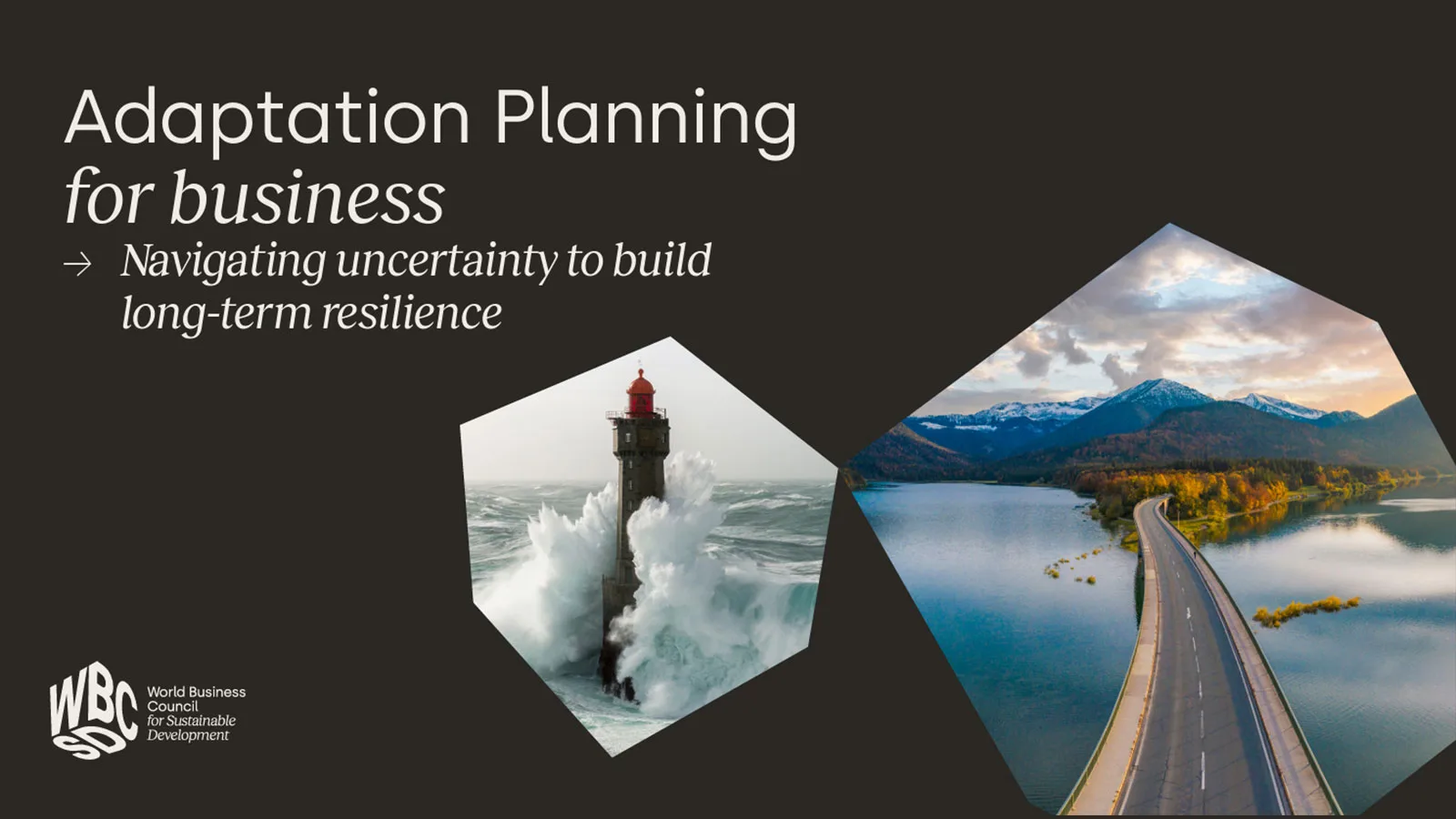Adaptation Planning for Business – Navigating uncertainty to build long-term resilience
Published: June 17, 2025

The physical impacts of climate change are no longer future concerns – they are here now, disrupting operations, supply chains, and increasing costs for businesses worldwide. From extreme weather events to long-term shifts in climate patterns, these realities demand immediate, strategic action. Adaptation is not just a choice; it’s a necessity for securing long-term viability, competitiveness, and creating value. The cost of inaction is substantial, threatening significant financial performance.
The guide “Adaptation Planning for Business – Navigating uncertainty to build long-term resilience” provides practical, action-oriented guidance developed by WBCSD in collaboration with over 70 global business and adaptation experts. It addresses the critical need for businesses to move beyond identifying climate risks to effectively planning for and addressing them.
Whether your business is just starting its adaptation journey or looking to enhance existing strategies, this guidance offers a clear roadmap. It outlines a structured four-step process to help you:
1. Set the Scope & Adaptation Goals: Establish the business case, analyse risks/opportunities, align stakeholders, and set ambitious goals.
2. Design Adaptation Solutions: Identify, evaluate, and select suitable adaptation options, considering financing and avoiding unintended consequences (maladaptation).
3. Build the Plan and Implement Adaptation Solutions: Define an investment roadmap, document planned actions, integrate adaptation into existing processes, and pilot solutions.
4. Monitor and Evaluate: Create a framework to track progress, measure the effectiveness of solutions, evaluate overall business resilience, and identify trigger points for future action.
This guide highlights that adaptation planning is most effective when integrated into core business strategies and existing processes like Enterprise Risk Management (ERM). It’s an essential component of a comprehensive transition plan.
Crucially, building resilience requires collaboration. The guidance explores opportunities for collective resilience-building initiatives with suppliers, customers, communities, and governments, emphasizing the vital role of aligning with National Adaptation Plans.
Download the guide today to empower your business to navigate climate uncertainty, protect your people and operations, unlock new opportunities, and contribute to a more resilient world.